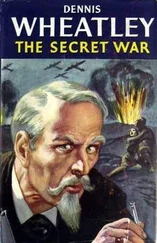Another recruit, Yotoku Miyaki, was a painter born in 1903, whose family had moved to California when he was a child. The American Communist Party talent-spotted Miyaki for the Comintern, and the slightly-built young man was persuaded to move back to Japan, where he proved a superb agent. In keeping with Moscow’s stringent finance policies, though Miyaki received a salary from Sorge, he supplemented this through giving language lessons and selling his pictures, which commanded respectable prices. Another key Sorge subordinate was a Yugoslav-born journalist, Branko de Voukelitch. The Fourth Department peremptorily instructed Voukelitch to strengthen his cover by divorcing his wife Edith and marrying a Japanese woman. This the compliant agent duly did, confusing himself as well as his associates by falling sincerely in love with a well-born local girl, Yoshiko Yamasaki, who eventually married him.
It was a reflection of Colonel Ott’s intimacy with Sorge that when he toured Manchuria in 1934, he took along the Russian spy as his courier in the Nazi interest. Sorge subsequently ghosted Ott’s report to the army economic department, which won plaudits in Berlin. The following year, the Japanese police broke up another Soviet spy ring in Tokyo run by an American, John Sherman, a development which increased Moscow’s dependency on Sorge. He once said, ‘Spying work must be done bravely,’ and indeed he became a famous figure in Tokyo’s social, journalistic and diplomatic circles, careering about the city on a motorbike, drinking heroic quantities of alcohol, bedding every woman within his reach. He rented a two-storey Japanese-style house at 30 Nagasaki Machi, and Moscow kept him supplied with sufficient funds to sustain the rackety life he loved. He had a housekeeper who became devoted to him, together with a maid and a laundryman who were routinely quizzed by the police. But even the pathologically suspicious Japanese had no clue that Sorge might be a spy; they regarded him merely as an influential acolyte of the Nazis.
He performed a daily tour of newspaper offices and the German Club before making his way to the embassy, where he now spent so much time that he was provided with his own office in which to conduct research and prepare material for transmission to Berlin; privacy was also useful for photographing documents for Moscow. A German diplomat spoke later of Sorge as ‘a gay, dissolute adventurer with a brilliant mind and an unassailable conceit’. The spy wrote a memorably ironic letter to his Moscow ‘wife’ Katcha in 1937: ‘it is very hard, above all this solitude’.
It was indeed a ceaseless challenge for the Soviet agent to sustain a masquerade as a Nazi stooge while he partied and womanised. In the evenings he frequented a string of bars and clubs – Lohmeyer’s restaurant in the Ginza, which had a loyal German clientèle; the seedy little Fledermaus; and the Rheingold, whose proprietor Helmut Ketel was an ardent admirer of Hitler. It was there that Sorge met ‘Agnes’, one of many bar girls who fell for him. Agnes proved to have staying power. She was twenty-three, and her real name was Hanako Ishii. She became increasingly a fixture in his house, and he paid for her to take lessons to fulfil a cherished ambition to become a singer. But Sorge was no more faithful to Hanako than to any other woman: he conducted a long parallel relationship with Anita Mohr, wife of a locally based German businessman, who was described as a ‘blonde bombshell’. Hanako appears to have provided a convenience rather than an object of real affection.
Sorge’s priority was always service to Moscow. As the weight of GRU material increased, so did the difficulties of transmitting it. Wendt, his radioman, was incompetent, and Sorge insisted that a better man must be found. In 1935 the spy left Tokyo, supposedly on holiday, bound for the United States. From there he travelled covertly to the Soviet Union, to confer with his chiefs and sort out the communications issues. In Moscow he was rebriefed about priorities, foremost among which was to explore Japan’s intentions towards the Soviet Union. Thereafter, in descending order he was ordered to study the Japanese army and industry; policies in China; positioning towards Britain and the US.
Soon after Sorge’s return to Tokyo, a new wireless-operator and courier joined him from Moscow. Max Clausen held officer’s rank in the Red Army. To provide cover he established a blueprint-copying business in Tokyo, which became a notably profitable pet project. Clausen’s first intelligence task was to build his own wireless set, common practice among agents in countries to which it was deemed too difficult or dangerous to dispatch a professionally constructed one. He used a domestic radio receiver, attached the transmitter to a Bakelite panel mounted on a wooden box, and wound tuning coils from copper tubing intended for motor manufacture. In the absence of instruments to measure wavelengths, Clausen transmitted on a 37–39 metre band, and received on 45–48.
Sorge persuaded a friend and fellow-journalist, Gunther Stein, to allow the Soviet operator to message Moscow from his flat. Stein initially recoiled from accepting this appalling risk, but eventually assented. Since Clausen dared not set up an external aerial, he stretched two copper-stranded wires, seven metres in length, around the room from which he transmitted. Stein also became a useful informant for the Sorge ring, exploiting friendships he had formed at the British embassy. So too did Torao Shinotsuka, owner of a small military-equipment factory in Kansai, who provided extensive material on military aircraft and naval armaments. Anna Clausen, Max’s adored wife, arrived in Tokyo from Moscow to share the wireless-operator’s hazardous existence.
The Soviet network’s membership thus expanded at a period when Japan was entering a period of paranoia about foreign espionage, and reinforcing its domestic security agencies. In 1936 there was a bad moment when Tokyo police arrested Taikichi Kawai at the request of their Manchurian counterparts. Kawai had been an informant of ‘Mr Johnson’ in Shanghai. In captivity he was brutally interrogated. Unlike most agents under torture, however, he gave away nothing significant. Sorge’s luck held. His work was giving the highest satisfaction to both of its beneficiaries, Moscow Centre and the Foreign Ministry in Berlin. The latter was especially delighted by a report which he compiled on the 1936 Japanese army revolt, but which he insisted should circulate among the Nazi hierarchy only under the coy initials ‘RS’, because he remained fearful of a Gestapo investigation of his political past.
He helped Ott and Dirksen draft a cable to Berlin, asking for information about a rumoured German–Japanese negotiation. Sorge sought to promote Moscow’s agenda by urging on the German embassy team the view that such an alliance would be mistaken, and rooted in absurd rumours that Stalin’s fall was imminent. He published an article on the Japanese army in Die Wehrmacht magazine. His reputation with the Tokyo embassy and with Berlin soared after the fulfilment of his prediction that Japan’s war in China would prove protracted. More important, however, was the mass of information about Japanese deployments on the Soviet border which Ott provided to Sorge, who swiftly forwarded it to the GRU. Moscow also professed appreciation of industrial data delivered by Hotsumi Ozaki at monthly restaurant meetings. The journalist had become influential in government circles, and correspondingly well-informed: for a time he even served in the Japanese prime minister’s office as an expert on China. Even though he lost that role when the government changed in 1939, he secured a new job as a Tokyo-based researcher for Japan’s Kwantung army in Manchuria.
Читать дальше












